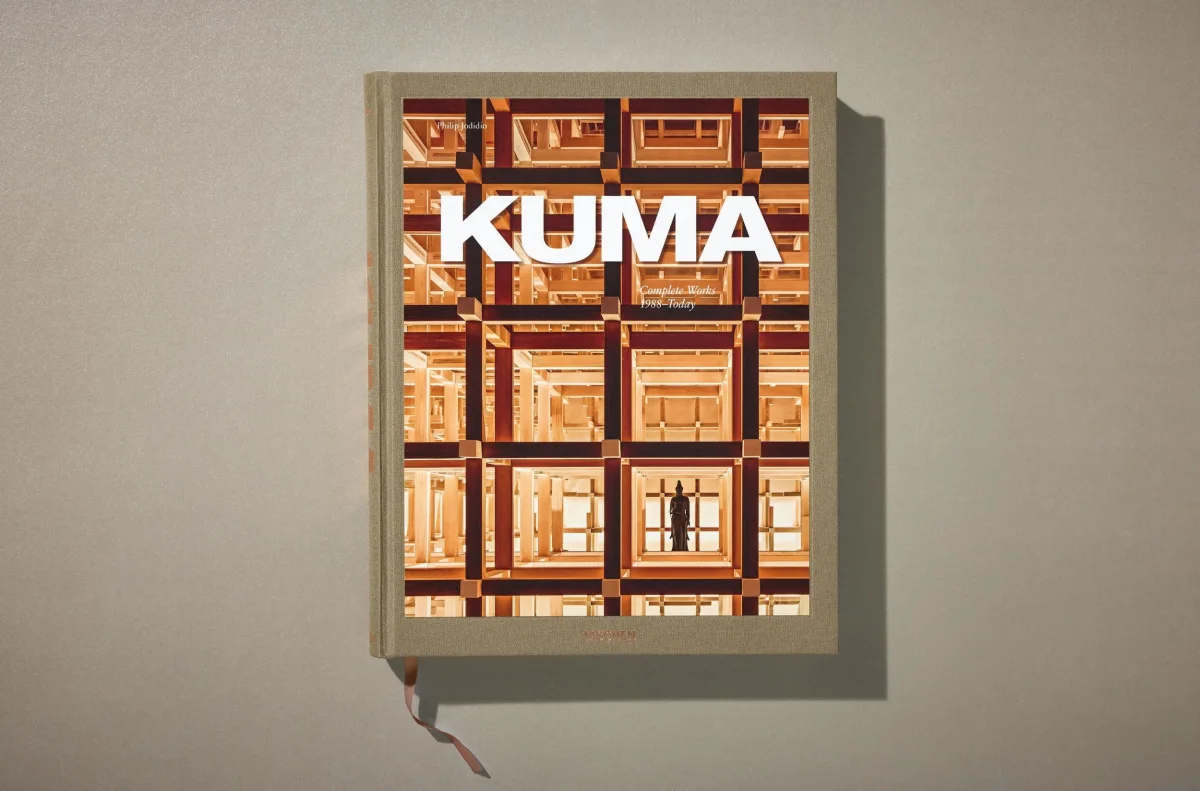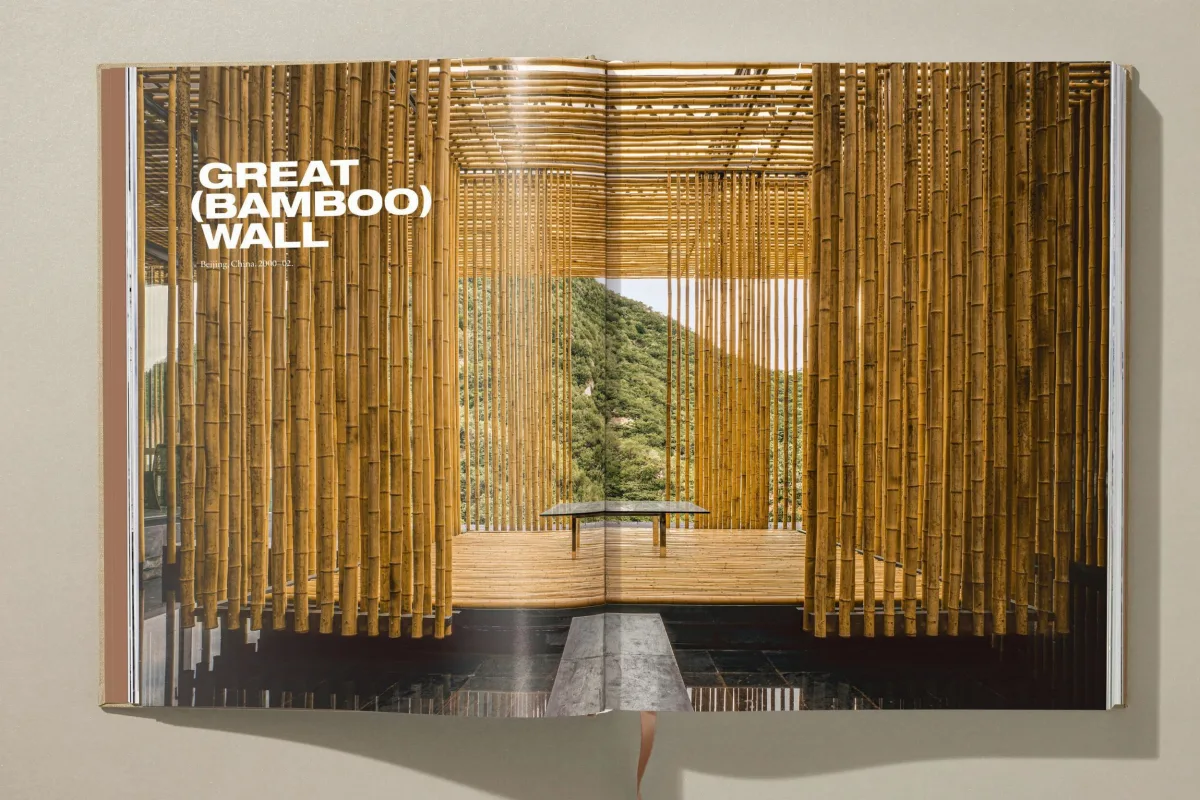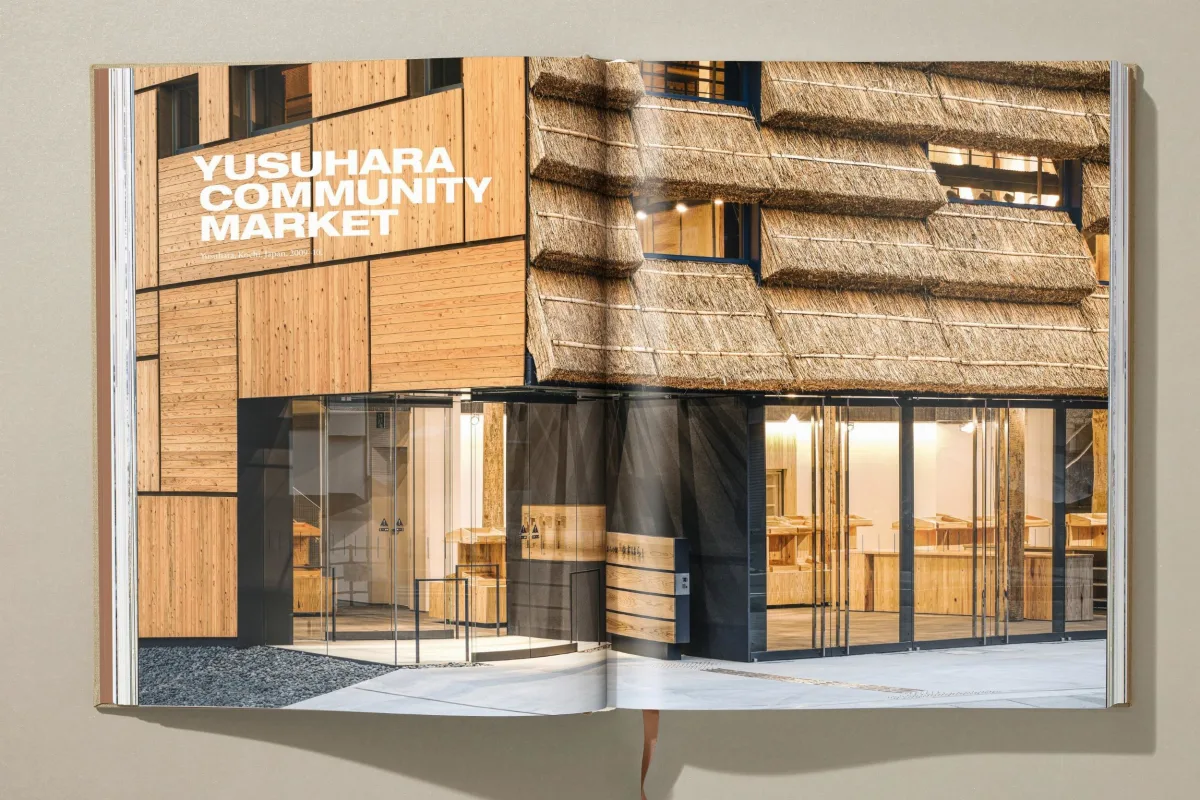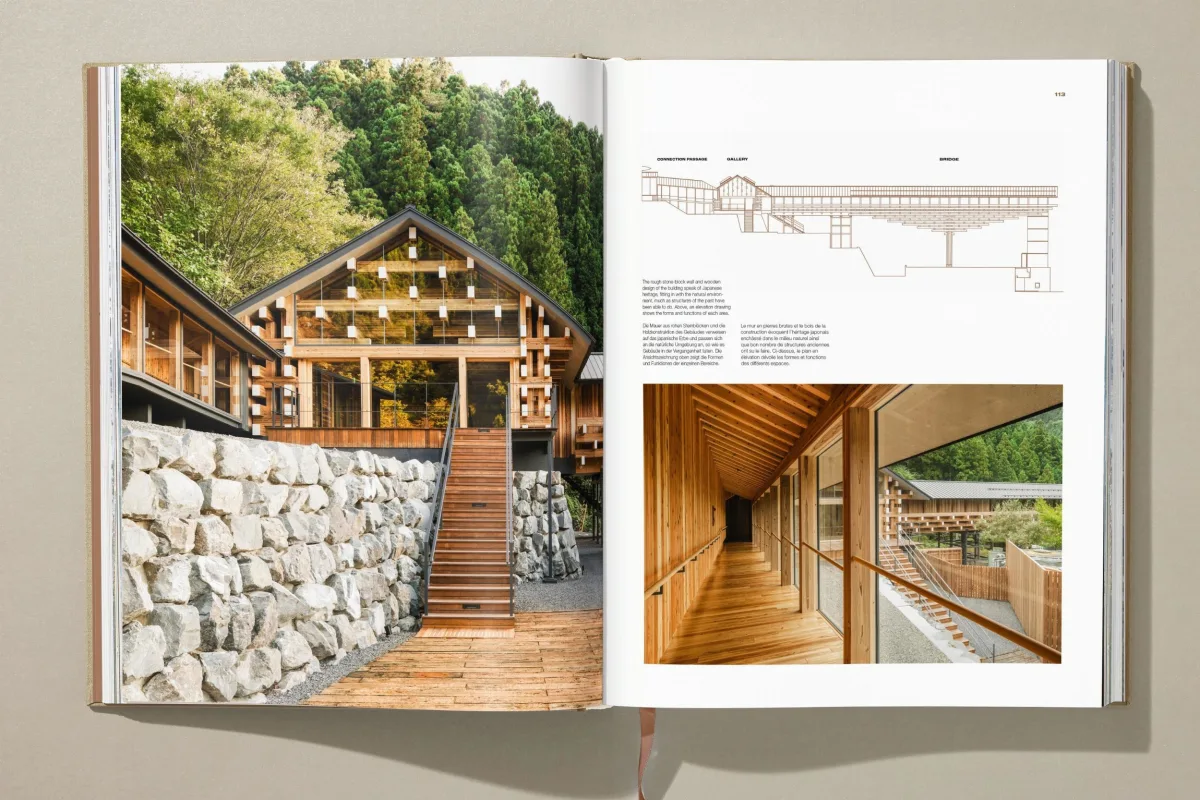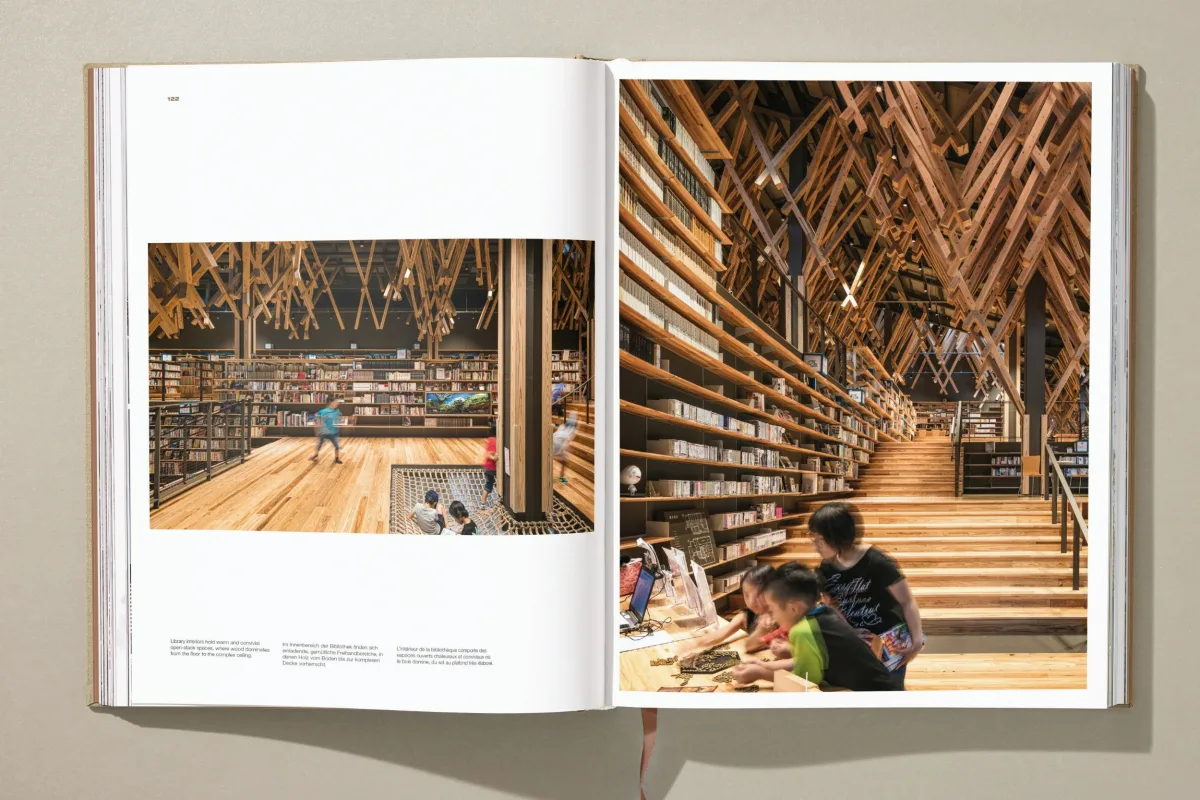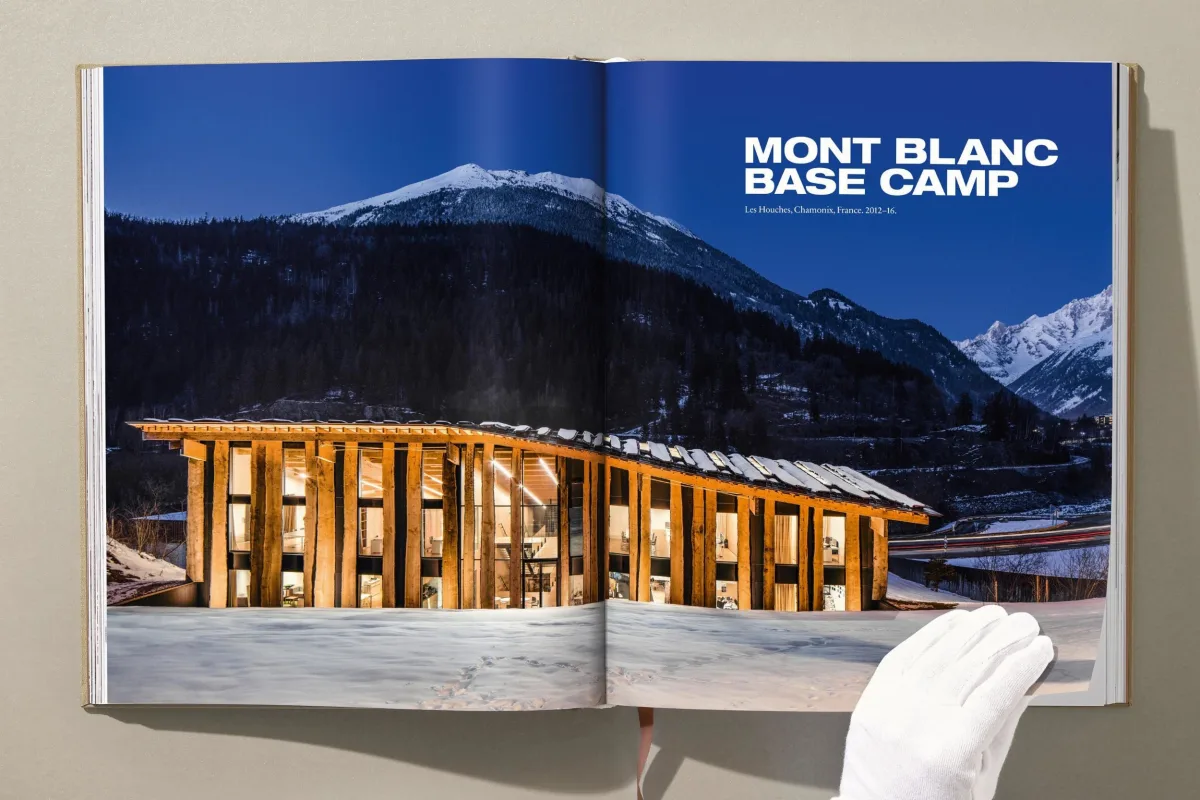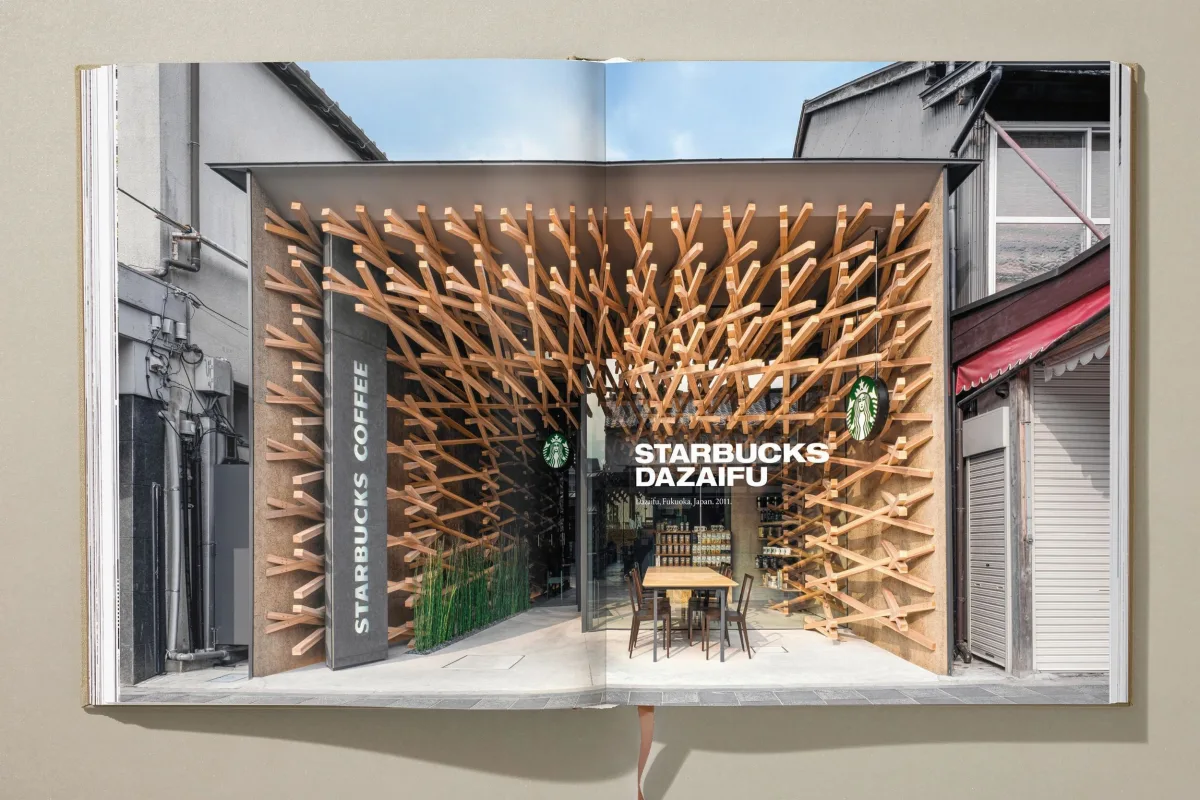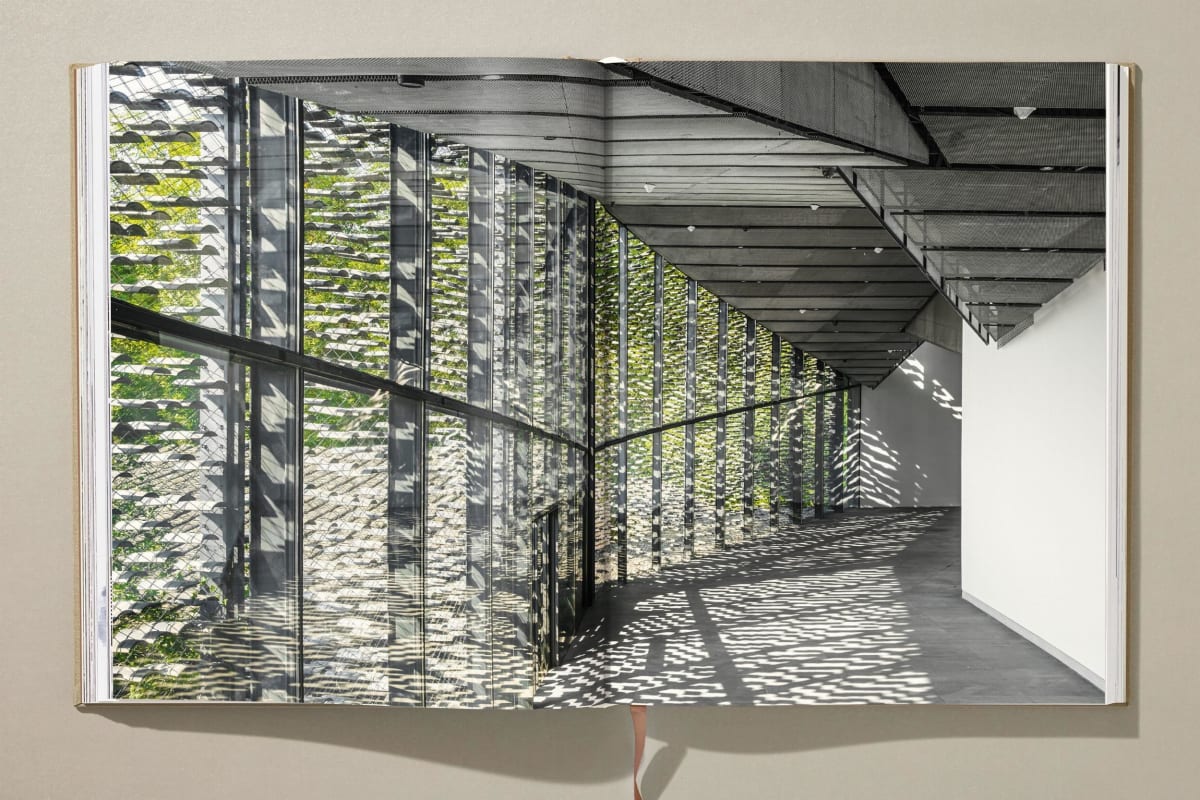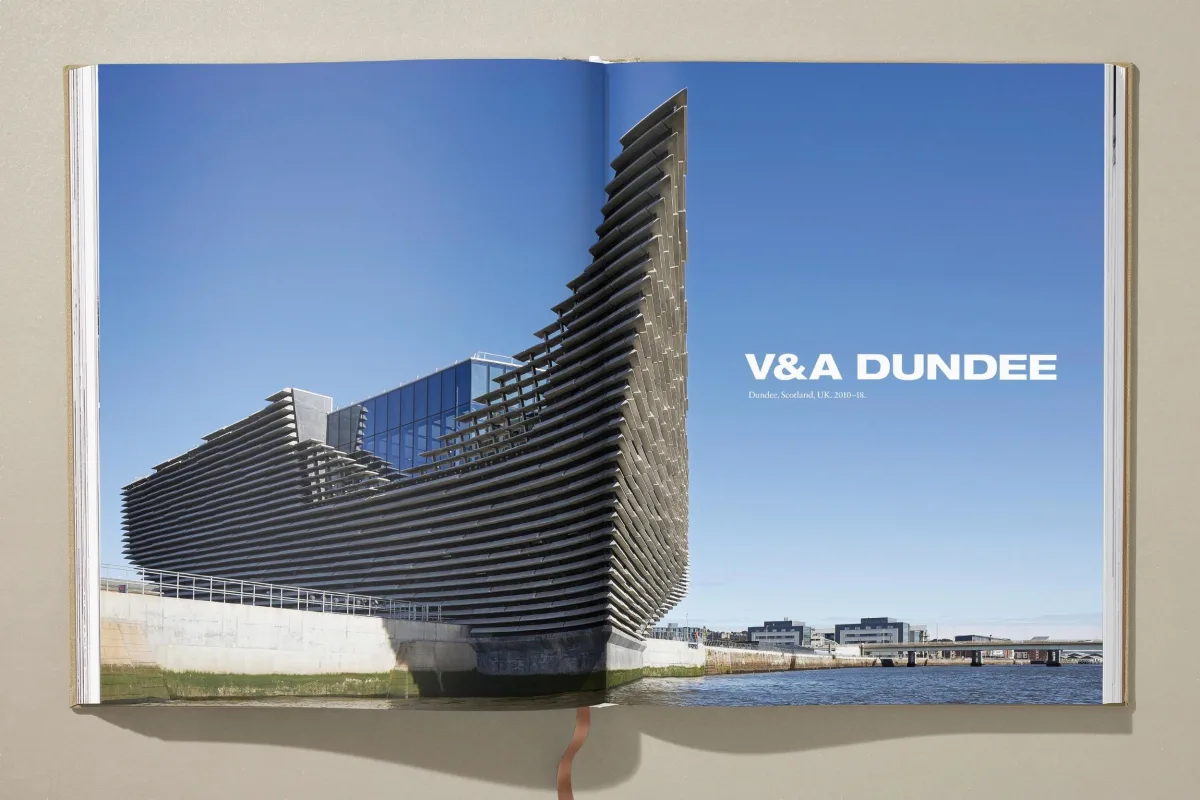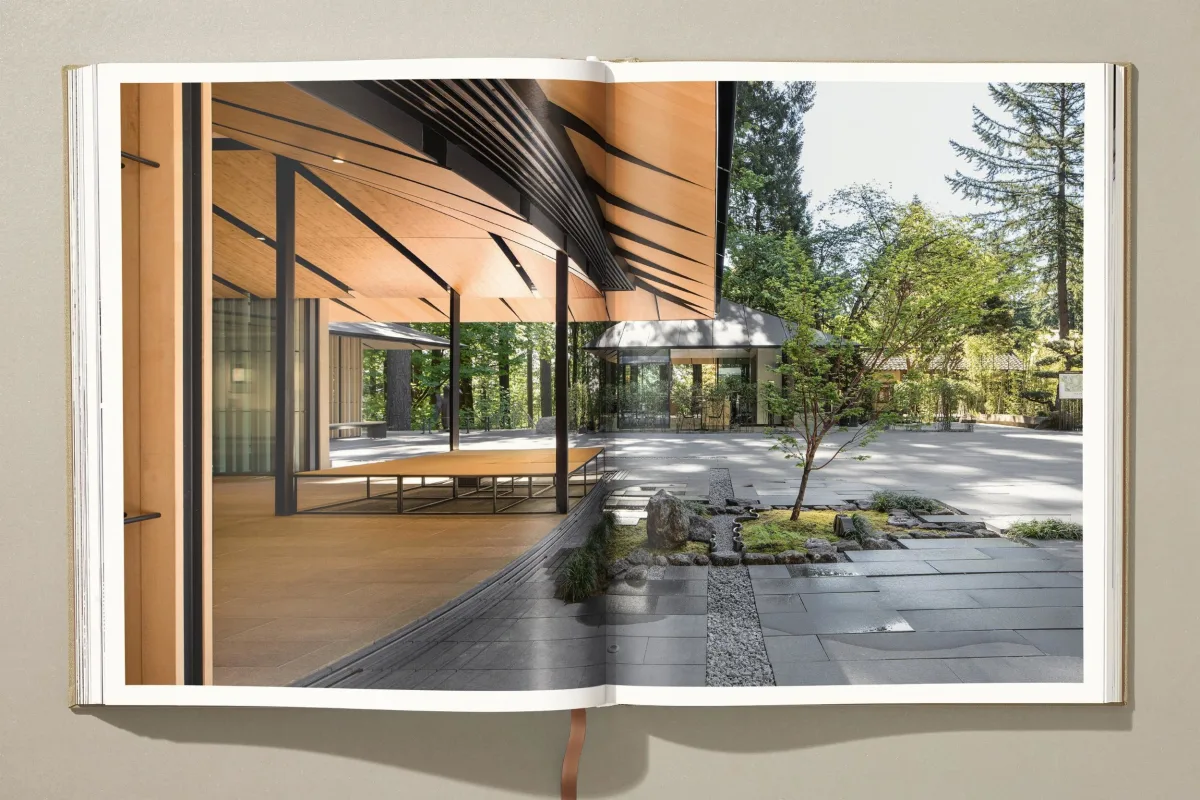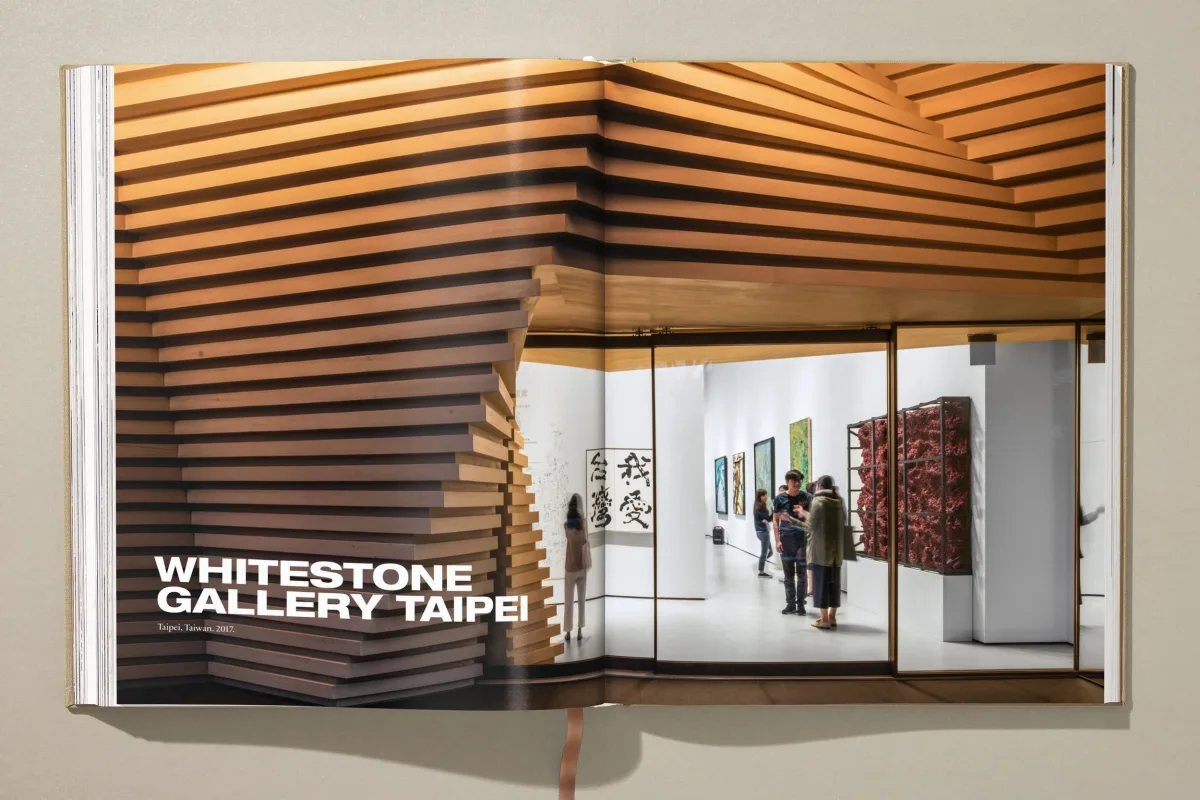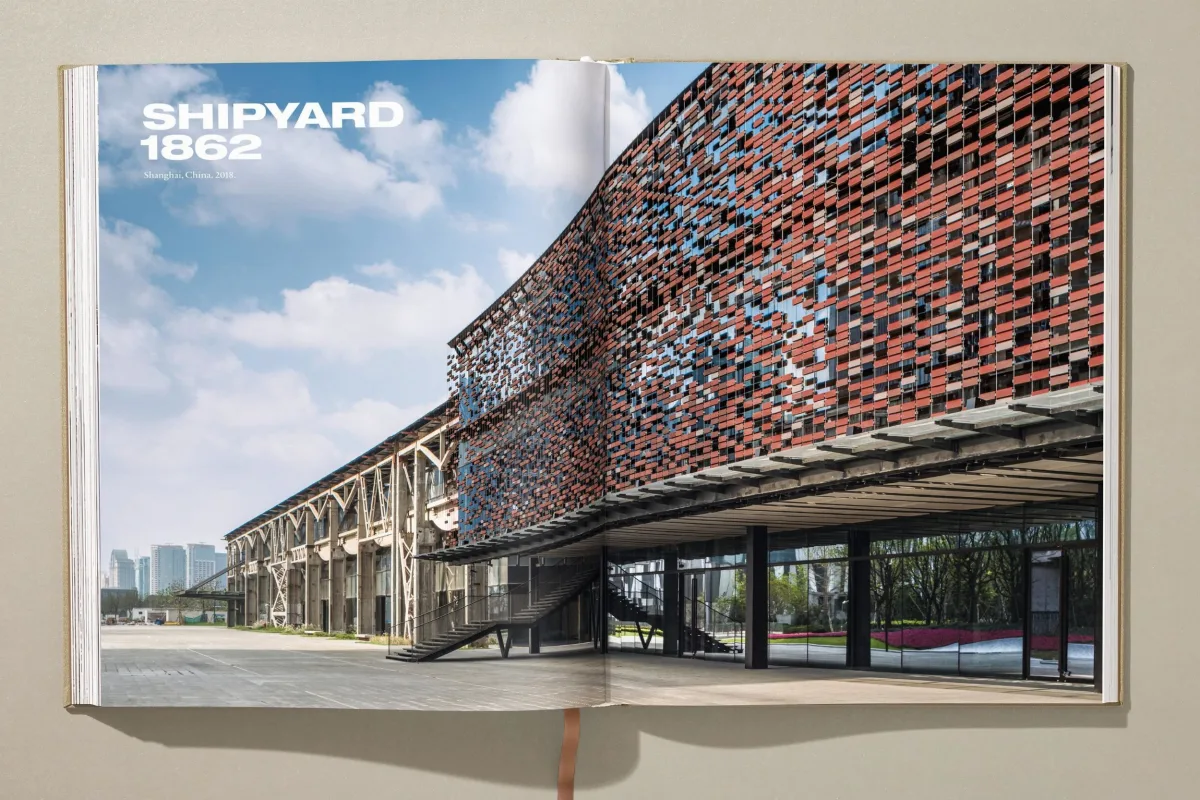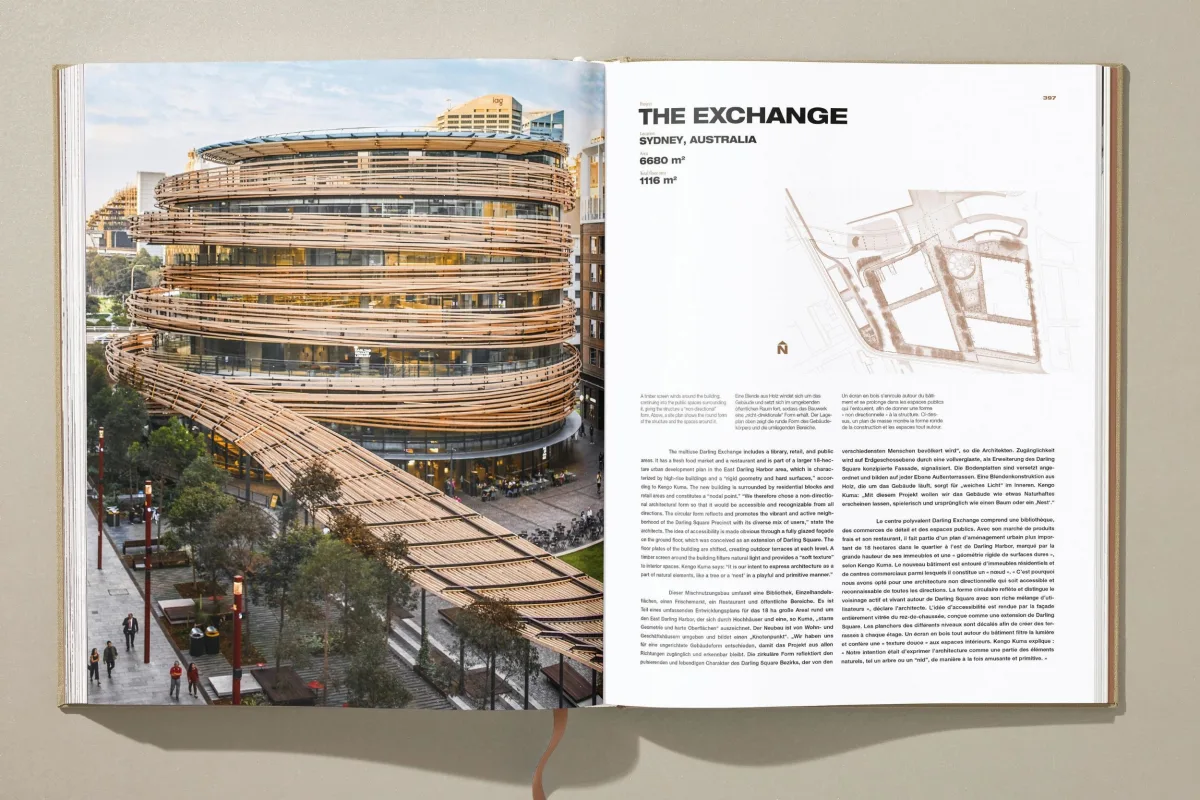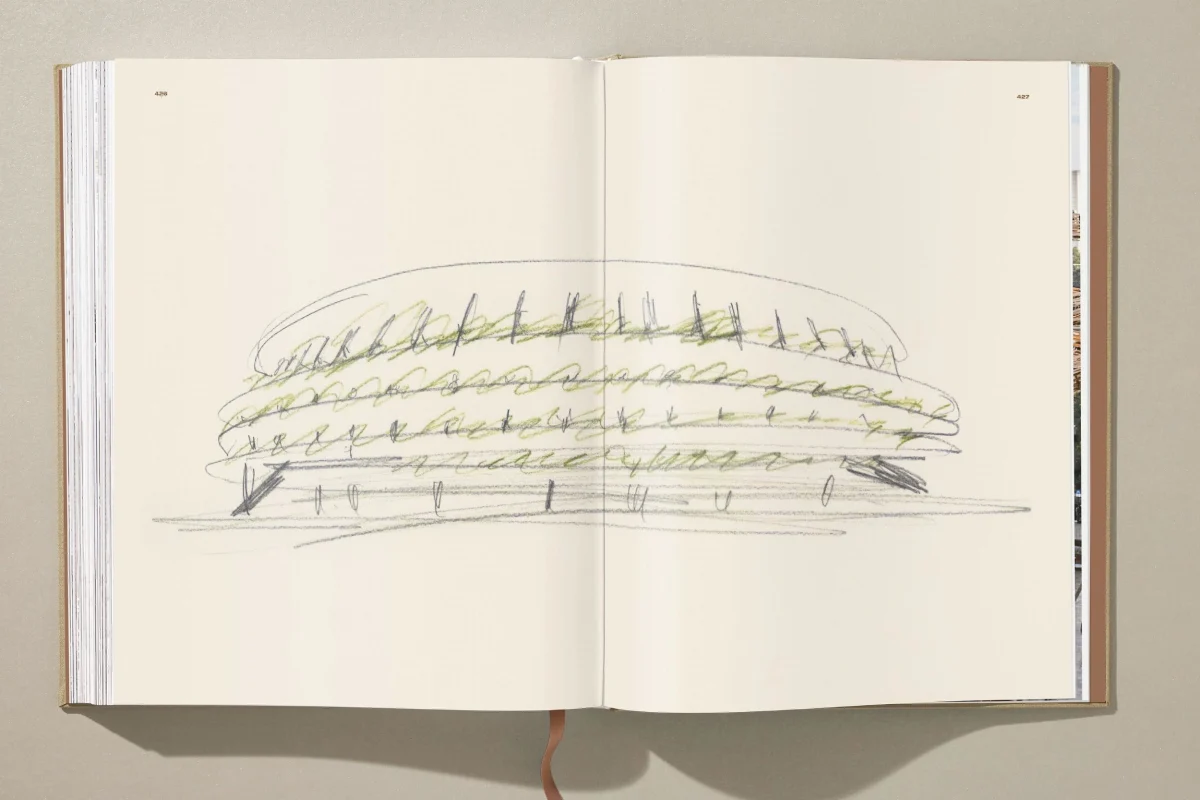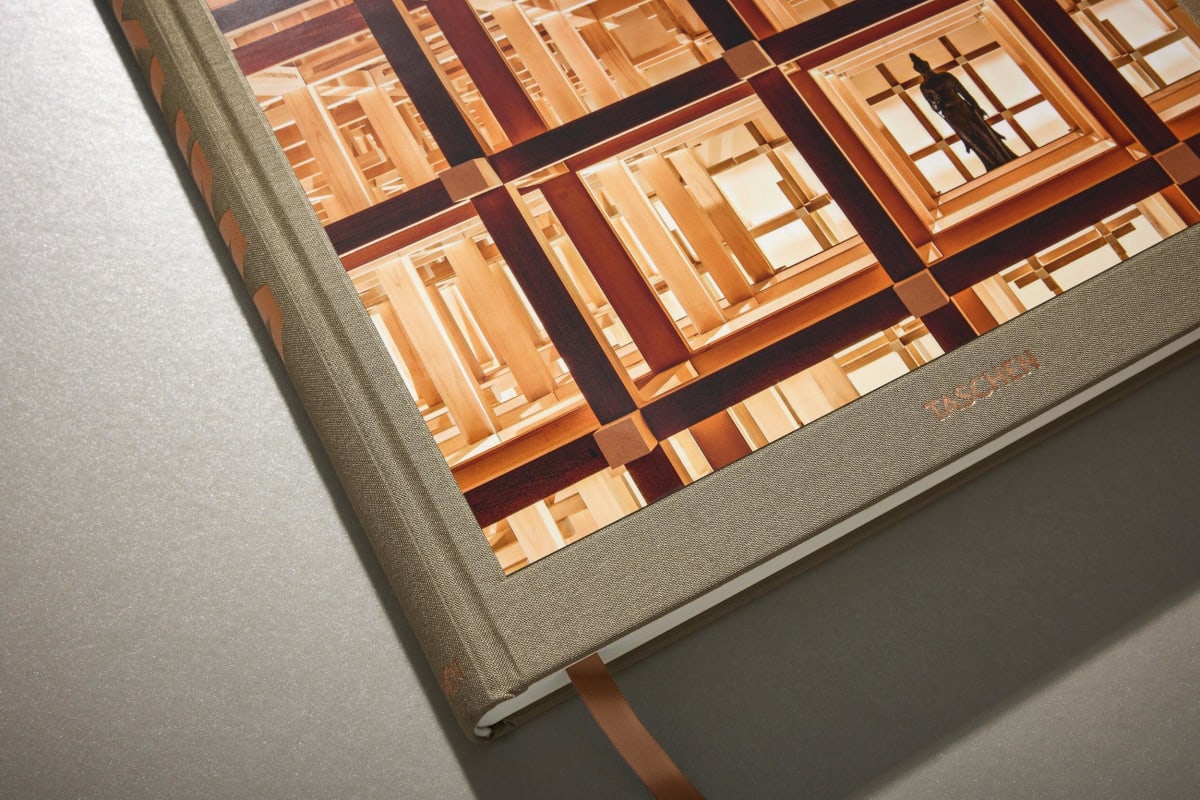1 / 15
XXL
XXL books are a minimum 39 cm (15.4 in.)
Kuma. Complete Works 1988–Today. 2021 Edition
200
From his Great (Bamboo) Wall house to the Japan National Stadium for the 2020 Summer Olympics, Japanese architect Kengo Kuma pioneered sustainability in architecture, turning local craftsmanship into a new, tactile approach. Discover his oeuvre in this extensive monograph.
Hardcover, 12.1 x 15.4 in., 12.00 lb, 460 pages
“This tome establishes once and for all that sustainability and style need not be set at odds.”
“… a celebration of Kuma’s approach to sustainable architecture.”
“Through descriptions, elevation drawings, sketches, and photographs, the architect’s signature texture seems to jump off the page.”
“For the past 30 years, I have been driven to create architecture by the desire to recover materials, and to reconnect people and physical things. It turned out to be the most enjoyable experience imaginable. This is because the world itself is material.”
“Explores all aspects of Kuma’s career – from 1988 all the way until today.”
“Details the architect’s humanistic approach to architecture.”
“A richly illustrated overview of Kuma’s oeuvre that delves into his complete archive of built landmarks across the globe.”
“…unfolds the mastery of Kengo Kuma’s architecture in its full glory.”
“Kuma’s unique and sustainable approach to contemporary architecture is celebrated.”
XXL
XXL books are a minimum 39 cm (15.4 in.)

Kuma. Complete Works 1988–Today
200The Complete Kengo Kuma
Erasing architecture: a definitive survey of the architect’s oeuvre
After Tadao Ando, Toyo Ito, and Fumihiko Maki, Kengo Kuma has breathed renewed vigor and lightness into Japanese architecture. Departing from the modernist skyscraper of the 20th century, Kuma traveled through his native Japan to develop a truly sustainable approach, translating local craftsmanship and resources into site-specific, timely buildings. Informed by tradition, and with both feet firmly planted in the present, this “materialist” heralds a new tactile architecture marked by its engaging surfaces, innovative structures, and fluid forms, reconnecting people with the physicality of a house. Kuma’s objective, above all else, is “just to respect the culture and environment of the place where I am working.”
To this end, Kuma shaped the China Academy of Art’s Folk Art Museum partially from discarded roof tiles; created a Chapel out of birch and moss in Nagano; and worked with local craftsmen to sculpt the V&A Dundee into a twisted, layered reflection of the Scottish coastal cliffs. With an extraordinary sensitivity for space, light, and texture, Kuma reveals unexpected qualities in materials, finding the weightlessness of stone in Chokkura Plaza and the softness of aluminum in the thatched roof of the Yangcheng Lake Tourist Transportation Center.
More recently, the architect brought his philosophy to the Japan National Stadium built for the Olympic Games, originally planned for 2020. Kuma has said the stadium could be “the catalyst that will transform Tokyo back from a concrete city. I want it to set an example that will help alter the direction of Japanese architectural design.”
In this XXL-sized monograph with some 500 illustrations spanning photographs, sketches, and plans, Kuma guides us through his entire career to date, detailing milestone projects as well as ongoing works.
To this end, Kuma shaped the China Academy of Art’s Folk Art Museum partially from discarded roof tiles; created a Chapel out of birch and moss in Nagano; and worked with local craftsmen to sculpt the V&A Dundee into a twisted, layered reflection of the Scottish coastal cliffs. With an extraordinary sensitivity for space, light, and texture, Kuma reveals unexpected qualities in materials, finding the weightlessness of stone in Chokkura Plaza and the softness of aluminum in the thatched roof of the Yangcheng Lake Tourist Transportation Center.
More recently, the architect brought his philosophy to the Japan National Stadium built for the Olympic Games, originally planned for 2020. Kuma has said the stadium could be “the catalyst that will transform Tokyo back from a concrete city. I want it to set an example that will help alter the direction of Japanese architectural design.”
In this XXL-sized monograph with some 500 illustrations spanning photographs, sketches, and plans, Kuma guides us through his entire career to date, detailing milestone projects as well as ongoing works.
The artist
Kengo Kuma (born in Yokohama in 1954) attended the University of Tokyo and established Spatial Design Studio in 1979 after further studies at Columbia University, New York. In 1990, he founded Kengo Kuma & Associates. He is based in Tokyo and Paris, while he teaches at the Graduate School of Architecture at the University of Tokyo, where he also runs his own Laboratory, Kuma Lab.
The editor
Philip Jodidio studied art history and economics at Harvard and edited Connaissance des Arts for over 20 years. His TASCHEN books include the Homes for Our Time series and monographs on numerous major architects, including Norman Foster, Tadao Ando, Renzo Piano, Jean Nouvel, and Zaha Hadid.
Kuma. Complete Works 1988–Today. 2021 Edition
Hardcover, 30.8 x 39 cm, 5.44 kg, 460 pagesISBN 978-3-8365-7512-6
Edition: Multilingual (English, French, German)Download product images here
5
Perret
November 2, 2021
Beau cadeau pour ma fille architecte, folle de ce que réalise Kuma.Great collection of Kuma's work
November 1, 2021
Although the collection and presentation of the works are visually well documented, I found that a regular sticker to indicate the number of the limit series does not fit the publication.Top shelf product
October 30, 2021
Hard to convince myself to unwrap it - such a beautiful book. Exceptional quality will last for generations. Daughter is a young architect and Kuma is one of her inspiration.Mehr KUMA geht nicht!
October 29, 2021
Er ist ein großer Meister der Baukunst. Kengo KUMA ist hervorragend in diesem opulenten Bildband präsentiert. Ich mag die Mischung aus Zeichnungen, Isometrie und den hervorragenden Bilder. Texte sind ausreichend informativ, die Verweise auf die japanische Kunst des Holzbaus wären eigentlich schon ein eigener TASCHEN Bildband wert. Kaufen und genießen!Kuma at his Best
October 28, 2021
With his ability to blend traditional and contemporary elements in beautiful design, Kuma is a delight for anyone who's ever been curious about buildings and how they evolve over time. In this collection of the finest photos of the work of one of the world's best architects, the value of this fine book can't be overstated.Complete Works Does Kuma Justice
October 27, 2021
Photographs of the quality we have come to expect from TASCHEN, are beautifully reproduced in this thorough volume. This book manages the delicate balance between presenting full structures and the details that constitute the whole. This is a real pleasure to read and to view.
